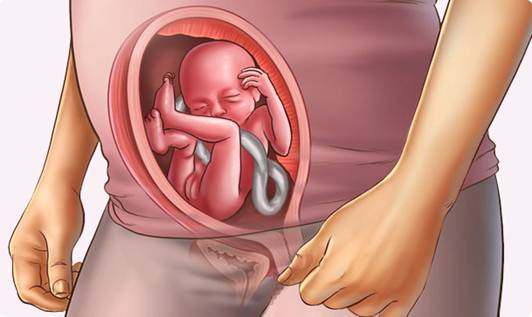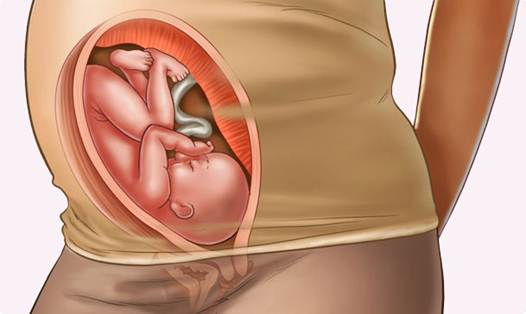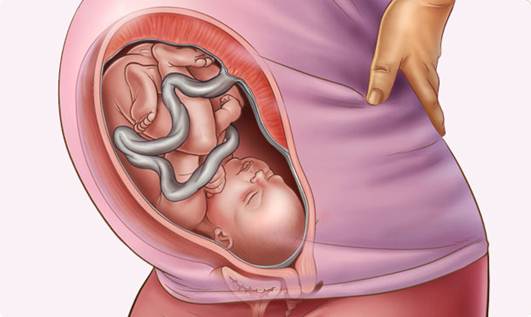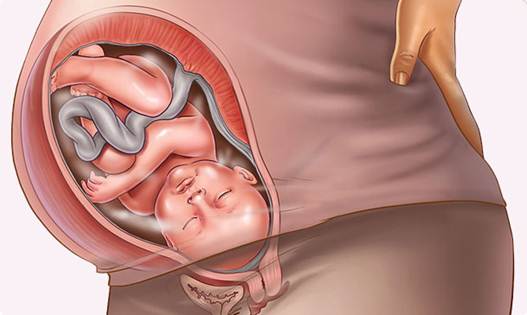There’s a good reason for each kick and
flip. Find out what your womb-mate is up to.
During my two pregnancies, we’d pass time
at family gatherings by waiting for the baby to kick. “She’s moving!” I’d yell.
But just as grandma Rozzie hustled over, the feeling would pass. “Don’t worry,”
I’d assure everyone. “Once I eat, she’ll probably start again.” More often than
not, though, the baby was unusually quiet during these get-together, perhaps
too mesmerized by all the activity on the outside to make her own ruckus.

When I think back, I can almost feel those
kicks again. Few things are as magical as the baby in your belly letting you
know she’s there, well before you’ll meet her face-to-face. “At five months, I
only had a slight bump, so the pregnancy wasn’t totally real to me yet,” says
Gina Bartnik, of Brooklyn, US. “But when I felt that movement for first time, I
thought, this is really happening. There’s someone growing inside me.” Not only
growing, but stretching, doing somersaults, and a lot more! Learn about all
there is to relish as your baby-to-be shows you her best moves.
The early flutters

normal
fetus at 20th week of pregnancy
·
When you feel them
You’ll usually
detect your baby’s first movements, known as quickening, between 16 and 22
weeks. It may be only a tiny quiver, but it’s tremendously exciting. With those
first few stirrings, your baby transforms from being someone you can only
imagine to an actual person who is already making himself know.
·
What they feel like
Some pregnant
moms say the sensation reminds them of a “butterfly kiss” (like eyelashes
rubbing against your belly); others describe it as popcorn popping, or ginger
ale bubbling. The feeling is subtle, though, so many women miss it entirely.
And others can’t tell whether what they’re feeling is the baby or indigestion.
“These are very subtle movements, which start around the 8th week.
Mostly, mothers can’t tell initially,” says Dr. Neena Singh, Director, Robotics
Gynaecology, International Centre for Robotic Surgery, Delhi.
“Patients
sometimes come to the clinic complaining of gas pains, or of a tingle in their
bladder,” says Dr. William Scheweizer, Clinical Associate Professor of
obstetrics and gynecology at New York University Langone Medical Center, in the
US.
·
What’s happening
This is nothing
but your baby moving and bouncing in the spacious sac, explain Dr. Singh. At 17
weeks, for instance, your little passenger can certainly kick, but he’s only
about 5 inches long, so the amniotic fluid he’s swimming in buffers his subtler
movements; you’ll feel only the full flops. If you get a sonogram at this
stage, you’ll see that your baby is pretty active. In addition to turning, he’s
flexing and punting, even sucking his thumb! And that’s a joyful sight!
Real-deal jabs

normal
fetus at 30th week of pregnancy
·
When you feel them
Between 20 and
30 weeks, Baby’s movements become more noticeable as she grows bigger and
stronger. “I’m 21 weeks, and for about 1 month, I’ve been feeling flutters,”
says Jen Munson, New York, US. “Then one night, I experienced my first
definitive ‘You now have my attention’ kick.”
·
What they feel like
You’ll get an
unmistakable jolt right in your midsection. “I was in a meeting a work, and I
had my hand on the side of my belly when I felt a thump for the first time,”
remembers Amy Jo Irwin, of Washington, US. “I basically ignored the rest of
that meeting because I was so intent on getting her to kick again!”
·
What’s happening
By this time the
sac has grown, your baby has grown exponentially, and you can feel your baby’s
movements, which are like a thud, Dr. Singh says. At 12 weeks, the average baby
weighs less than 30 grams; by 26 weeks, the baby weighs slightly more than 900
grams. Her larger, more powerful feet and arms will pack some real punch,
which, not surprisingly, an make it hard for you (or even your partner) to
rest. And getting accustomed to late night wake-ups is not a bad thing.
Behold! Amazing in uterus gymnastics

normal
fetus at 35th week of pregnancy
·
When you feel them
From weeks 30 to
35, you’ll be fascinated by watching your stomach change shapes as your baby
shifts inside it. During both my pregnancies, my round belly would suddenly
become pointy in one side, or even square-shaped, until another wave of motion
would make it morph yet again. Or, I’d wake up to a lopsided tummy because the
baby decided to cosy up and burrow on one side.
·
What they feel like
“It’s truly an
inexplicable sensation,” Beth Overla, of Michigan, US remembers. You might try
to decipher what part of the baby is poking against your side or passing across
your stomach: Is that a foot? An elbow? A knee? “Whenever Ezra moved, I would
see a big thing go across my bally,” says Shaina Silverman, of Houston, US. “I
asked my doctor about it. He laughed and said it was his tush!”
·
What’s happening
A lot is going
inside now! In one study in the US, when women in their third trimester were
asked to count their baby’s kicks, they reported feeling an average of 10
movements in 20 minutes. It’s normal for your baby now to continually shift
around. Eating certain kinds of foods typically results in some action, but
sounds play a role too. In fact, what most excites many babies is Daddy. By
about the fifth month of pregnancy, your baby hears well, and low-pitched
sounds – like a man’s voice – give babies more of a jolt than high-pitched
sounds do, probably due to the way sound travels through water.
Final stretches

normal
fetus at 40th week of pregnancy
·
When you feel them
Once you’ve hit
35 weeks, your baby has less room to move, so you’ll notice fewer gymnastics.
But she may still have more tricks in store before she makes her debut. “The day
before my maternity leave began, I was in the ferry to work,” says Dorothy
Voigs, of New York, US. “A mother and her young son sat across from me, and he
was starting at my belly because the baby was moving noticeably. Then he
grabbed his mom and screamed, ‘That lady has an alien inside her!’ I laughed so
hard, I thought I’d go into labour.”
·
What they feel like
You may have
pain under your ribs because your nearly full-grown baby is pushing up with her
feet. Your pelvis may also ache as she presses her head download – not un, but
ar least she’s moving in the right direction!
·
What’s happening
By eight months,
most babies settle into a head-down position, preparing for birth. A small
percentage gets into the breech, or head-up position. (if your baby stays that
way, you’re likely to need a Caesarean section) “The last month was very
exciting,” remembers Robyn Buie, of Oklahoma City, US. “One week my daughter
would be breech. The next week, her head would be down. I was able to guess her
position because I could feel her hiccups. If they were high, she was breech.
Low? Her head was down.” Cue to the best part of your pregnancy (around 40
weeks): When it ends, however it ends, you’ll finally have your little acrobat
in your arm.